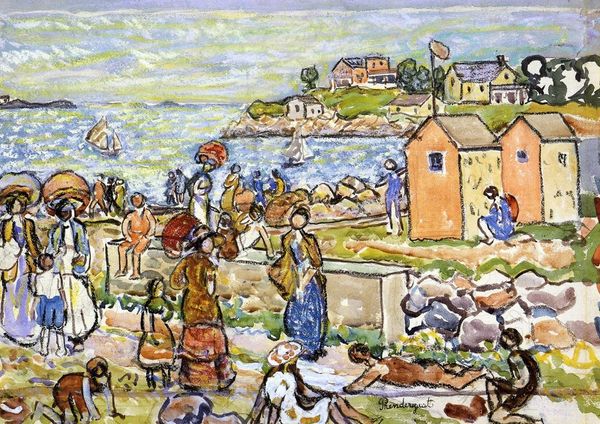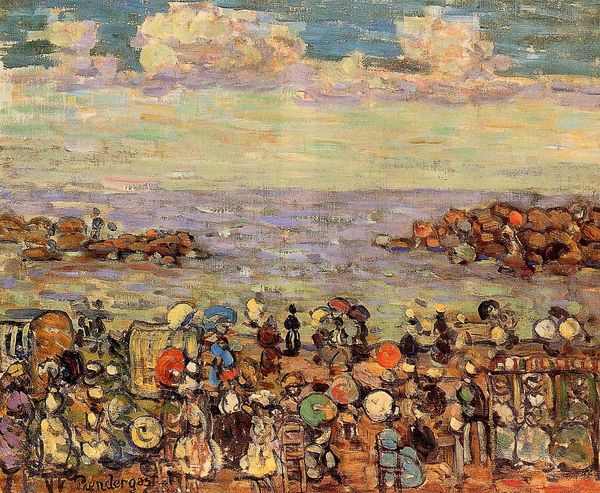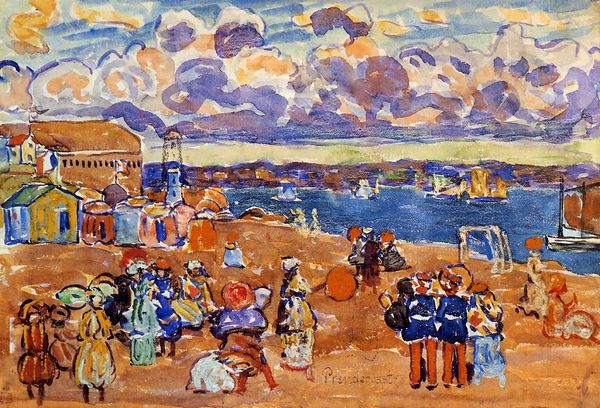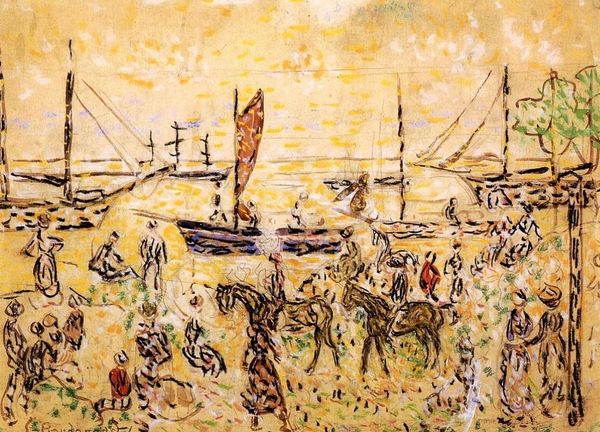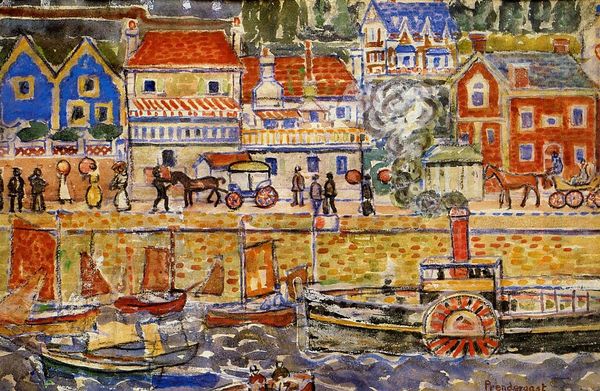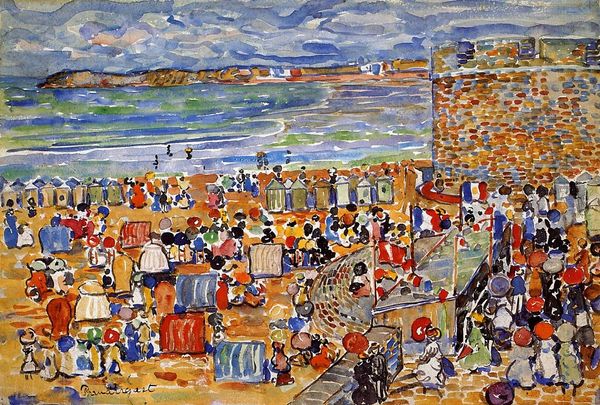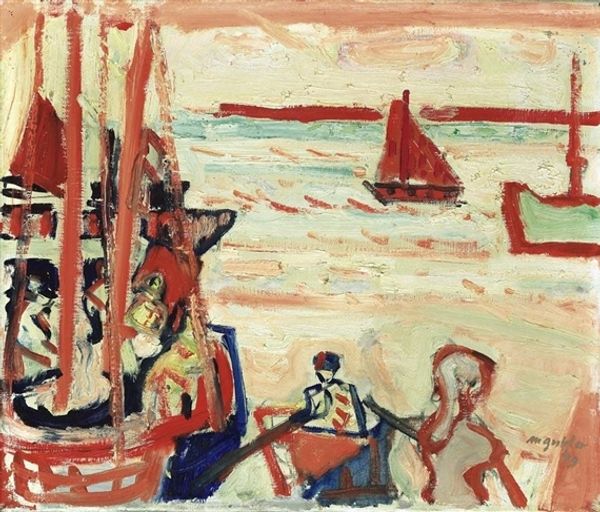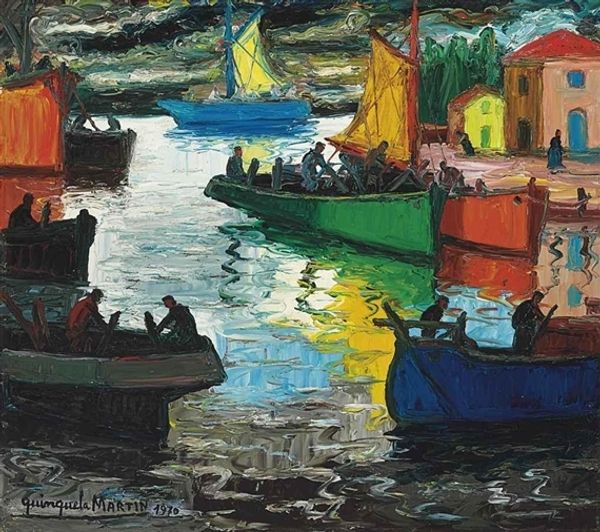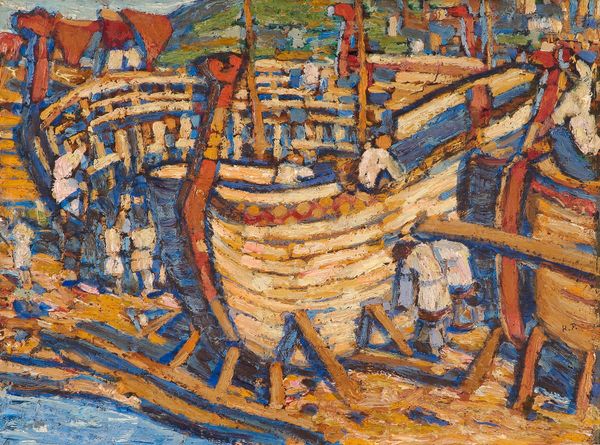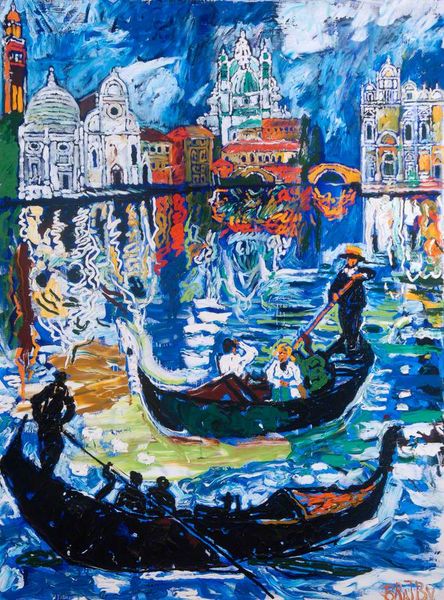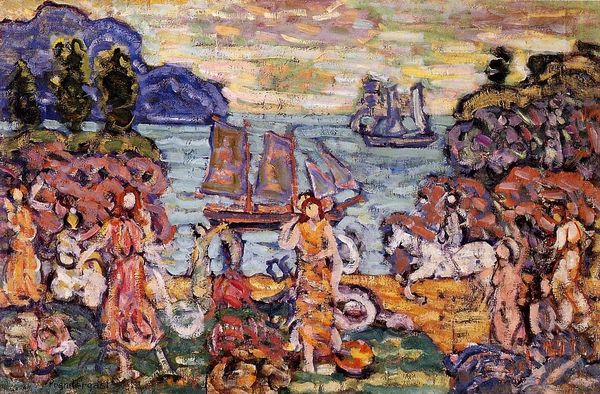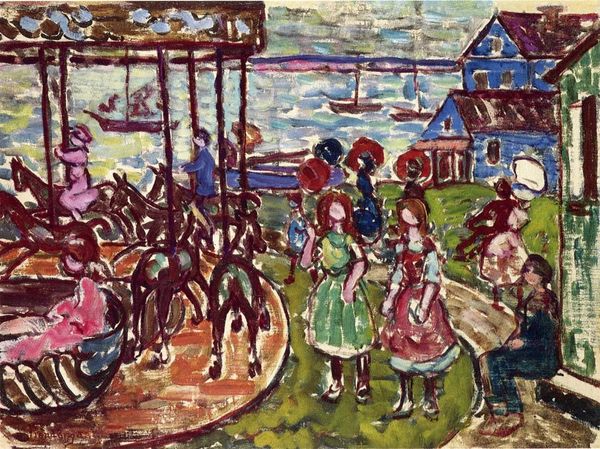
Dimensions: 38.74 x 55.88 cm
Copyright: Public domain
Curator: Looking at this colorful harbor scene, my first impression is festive chaos! There’s a vibrant energy with a mosaic of shapes, but also a disorienting jumble of people, carriages and boats. Editor: I agree! This is Maurice Prendergast's "Quai, Dinard" from 1914, painted with thick, textured strokes of oil. It certainly reflects the hustle and bustle of a port city. He doesn't smooth the paint; the texture adds so much. Curator: That impasto gives a tactile quality, a kind of naive representation. The forms are abstracted to an almost child-like perspective. But the overall scene, with its repeated motifs and lively hues, reminds me of medieval tapestries, dense with symbolic action. Those carriages, the steamships – each carries an individual story. Editor: Right. Considering its production in 1914, just before World War I truly shifted material culture, those symbols could hold specific connotations related to social class and technological advance. And the density of figures and boats really evokes that specific point in time—the last moment of perceived peace before unprecedented global shifts. The sheer volume of paint, too, might reflect Prendergast’s reaction against the growing industrialism by emphasizing the hand-made. Curator: Indeed! He gives us a snapshot of society, but his technique is a symbolic language in itself, evoking something idyllic even at the edge of modernity. Even that green is an incredibly fertile color, despite the imminent shift toward total war and unimaginable social change. Editor: I'm struck again by that surface texture. You almost get a feel for how Prendergast constructed this reality, one brushstroke at a time. The paint isn’t trying to disappear; it’s telling us how it's been worked. Curator: It's more than just visual. It evokes our memory and longing for an idyllic past that was already slipping away. The boats especially become potent symbols of travel and trade but also departure, loss, and even potential conflict on the horizon. Editor: It makes you consider all the stages, tools and individuals that would have produced each object, person and carriage, from extracting raw materials to fashioning the dresses, all rendered on the canvas with distinct colors. A final product encapsulating that history in paint. Curator: Exactly! A painting filled with echoes of both tangible realities and subconscious symbols. Editor: Food for thought. I will think twice when I next encounter such an accumulation of material, and also to the labor from the subject he is illustrating on the canvas, and also the labor that he used to complete the art work itself.
Comments
No comments
Be the first to comment and join the conversation on the ultimate creative platform.
